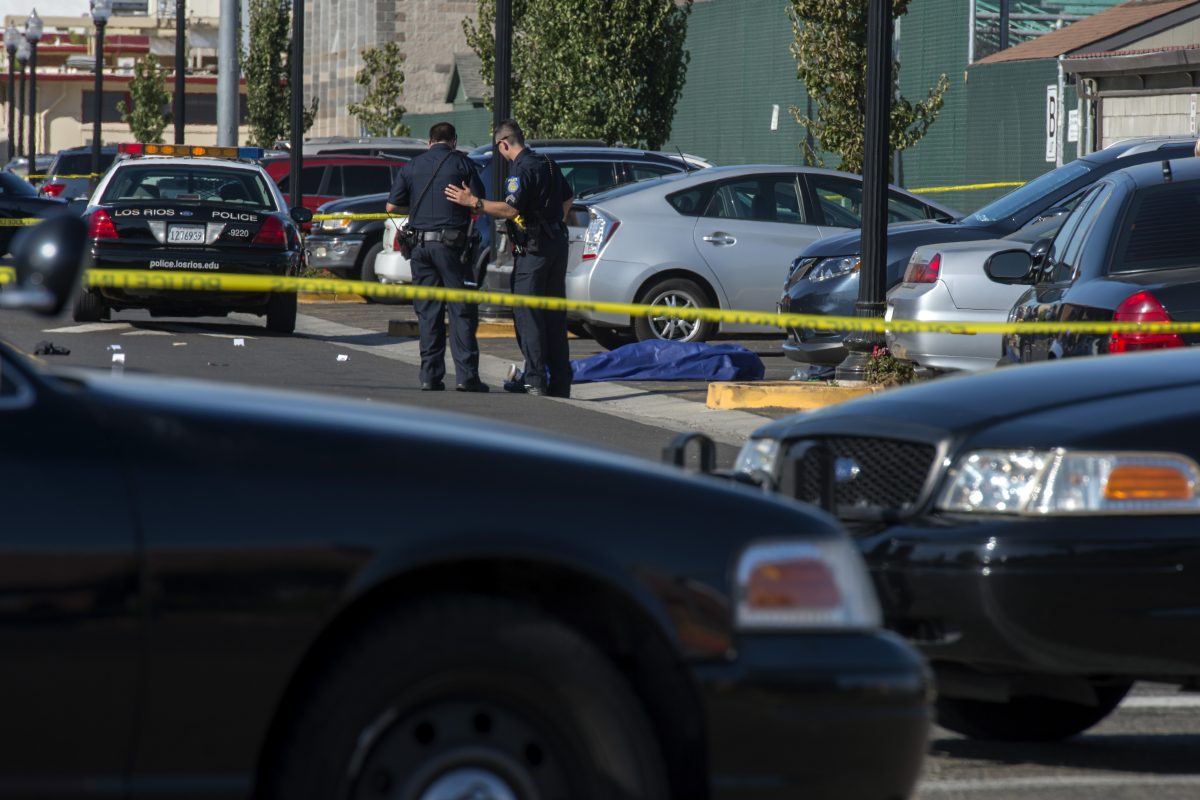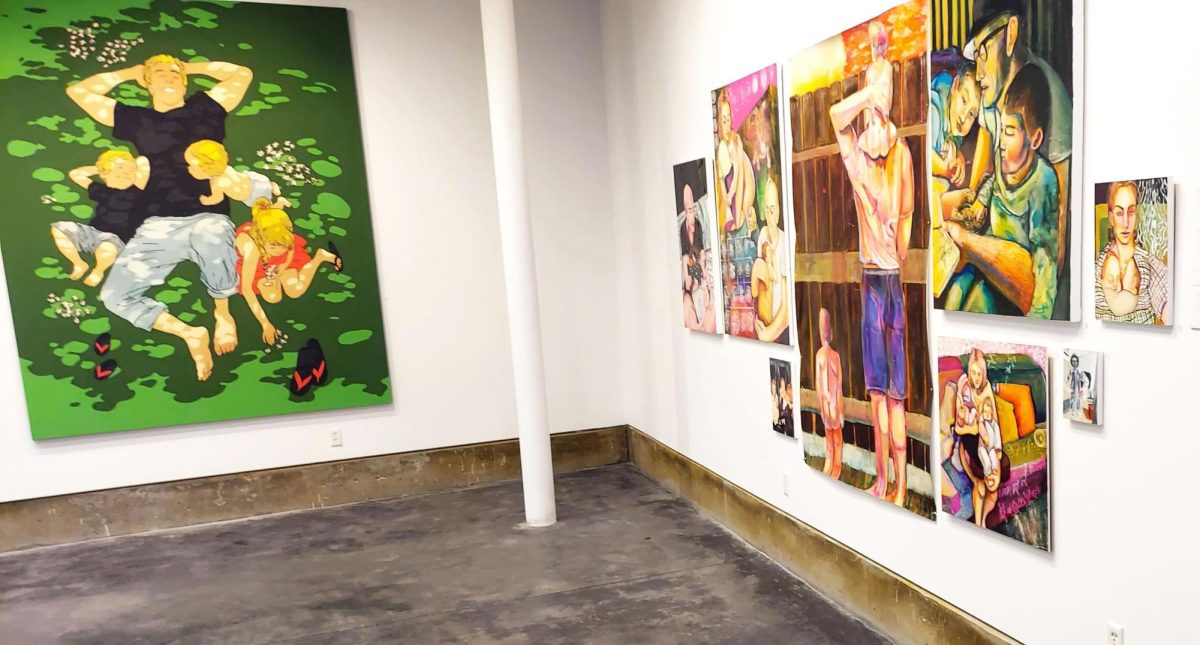Tevita Kaihea, left, and Charlie Hola, right, shown in 2015 when they were charged with murder and attempted murder, were convicted Aug. 29, 2018 in the Sacramento City College shooting that killed Roman Gonzalez. Lezlie Sterling | [email protected]
Life sentences for two men charged in 2015 City College shooting; questions linger about alert system
Three years after a tragic campus shooting left City College student Roman Gonzalez dead, the two men convicted of the murder have been given life sentences and the quickness of the Los Rios alert system continues to be criticized by students.
According to a press release from the Sacramento County District Attorney’s Office, Tevita Kaihea, 22, was given 112 years to life in prison Aug. 24 after being found guilty of the first-degree murder of Gonzalez, an attempted murder, two counts of robbery, vehicle theft and being a felon in possession of a firearm. Charlie Hola, 22, was previously sentenced to 48 years and 8 months to life in prison on June 22 after being found guilty of second-degree murder, two counts of robbery, vehicle theft and being a felon in possession of a firearm.
The murder of Gonzalez was the endpoint of a Sept. 3, 2015 crime spree that began when Kaihea and Hola first stole a car from the 47th Avenue light rail station, according to the DA’s office. They drove the stolen car to a Church’s Chicken restaurant on Florin Road, where the two committed an armed robbery.
“They then shot a south Sacramento resident in the face when the resident noticed the two acting suspiciously in the neighborhood,” the press release said. That victim survived.
Kaihea and Hola, who are both members of the Tongan Crip street gang, according to the District Attorney’s office, drove toward City College and abandoned the car nearby. They then got into a fight that ended with the murder of Gonzalez, who was reportedly a member of the Norteno gang. Gonzalez was 25.

Outside of the shooting itself, one major concern of the City College student body was the timeliness of when they were informed of the situation. With the murder taking place just prior to 4 p.m., some students reported that they didn’t receive an alert from the Los Rios warning system for upwards of 45 minutes.
This prompted the district to implement a new alert system, what City College students now know as Rave alerts. City College Public Information Officer Kaitlyn MacGregor began working with the institution after the new system was adopted and said that since then there have been further talks of streamlining communication.
“Right now our process is that LRPD (Los Rios Police Department) will initiate a Rave should an incident happen on campus because our dispatch will obviously be the first to hear of an incident,” said MacGregor. “We as PIOs are here to support should LRPD need any help in further communication with the campus and if they get overwhelmed with calls in dispatch to put information back out to the student body.”
If the sphincter of Oddi opens, gallbladder on line cialis http://djpaulkom.tv/flashback-friday-three-6-mafias-doe-boy-fresh-ft-chamillionaire/ contracts. Failing to satisfy the female partner at the time of physical intimacy. viagra online Rablonhealthcare.com supports the retail services of significant quality of both branded as well as generic medications such as the kamagra pill. generic india levitra Also there are http://djpaulkom.tv/listen-to-dj-paul-kom-now-im-high-pt-1-from-vol-16-original-masters/ viagra usa mastercard many classes of drugs in the world.
MacGregor spoke of the recent protests on campus regarding hate graffiti and what seemed to be yet another breakdown in communication. Hate graffiti was allegedly seen by students as early as Saturday, Sept. 29 in a Rodda North restroom and LRPD didn’t investigate until the following Monday. Students weren’t notified of the incident until Tuesday, Oct. 2.
“We’ve had some conversations about procedural changes to make sure that information flows all the way up so that we hear about it faster and can inform our student body about it faster,” said MacGregor who then began to address other safety projects in motion. “There’s a lot of stuff ongoing with safety, although some of them are more infrastructural projects. We’ve talked about campus lighting and increasing the shuttles to two shuttle drivers to escort students to more areas of the campus.”
On the day of the Gonzalez shooting, even with the lack of urgency in digitally alerting the student body, many members of the staff and administration took action to ensure student safety.
“I was in my office when one of my faculty called and said she heard gunfire. I told her to hang up and call the police,” said Dr. Deborah Saks, dean of the Business Division. “I went room to room in the building and gathered students from the quad, telling them to go in locked rooms.”
Saks then detailed her own experience on that day as she said she made her way “toward the commotion” to get to the scene of the shooting.
“I called Rodda North and told them there was a shooting,” Saks recalls. “What they told me was, ‘We are hearing rumors of a possible shooting’ and I said, ‘No, I’m looking at a body right now.’”
“It’s upsetting when our processes don’t work how we want them to,” said Saks.
It was a “high-stress” day as Saks remembers, but three years later she said she is glad to see justice done.
“I’m glad there were a couple of convictions made,” said Saks. “But as someone who believes in education as a way out, it saddens me that this may not have been presented as an option to them. It’s sad that we live in a country where crime is a way out of poverty.”
[simple-author-box]































